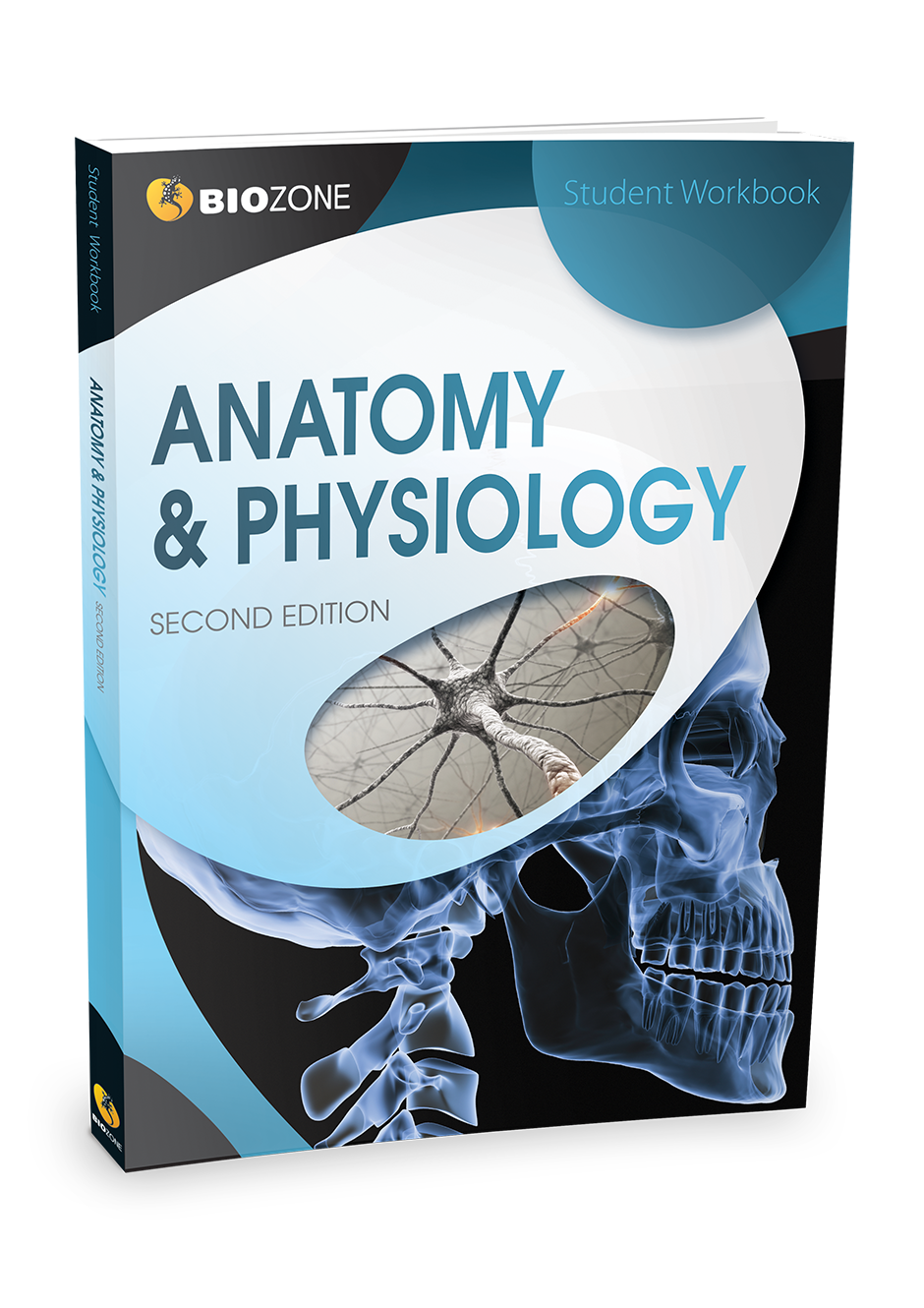No products in the cart.
Anatomy and Physiology 2nd Edition – Student Edition
$32.95
Add to cartAnatomy and Physiology Second Edition
Student Edition
$32.95
$21.95
Taxes & shipping calculated at checkout
SKU
ANP
Categories Anatomy & Physiology, Biology, Electives & Honors programs, Print, Student Edition
See every page
Get a sample packet for classroom trial (PDF)
Suitability
Grades 10-12 and undergraduate life sciences (vocational).
Edition
2nd
(2013)
No. Pages
282
Format
PRINT: Paperback, Full Color
DIGITAL: Personal License
or School License
NIMAS
Yes
Secure checkout
Overview
Contents
Teacher toolkit
Student support
Digital
Overview
Product Description
BIOZONE’s Anatomy and Physiology Student Workbook explores the essentials of human structure and function through engaging, generously illustrated write-on activities. Homeostasis provides the unifying theme throughout the workbook and key interactions between body systems are indicated using annotated introductory figures. Using key examples, students are encouraged to explore each body system within the contexts of disease, medicine and technology, aging, and exercise. The result is a rounded exploration of the functioning human.Features
This revision includes more than 50 pages of updated content, incorporating feedback from users and providing greater scope of coverage in key areas, including muscular and skeletal anatomy, and neural and cardiovascular structure and function.- 190 ActivitiesVaried, engaging activities provide ample opportunity for students to explore and test their knowledge and understanding.
- Easy to FollowThe workbook structure is based around the 11 human body systems, with an emphasis on system interactions and interdependence.
- Clear Learning OutcomesLearning objectives outline the knowledge and skills that students must acquire, with additional guidance as appropriate. Key concepts provide a summary of essential ideas.
- Concept-Based and AccessibleThe complexities of the human body are made accessible through a concept-based approach. Students progressively build knowledge and deeper understanding through the use of real-world contexts.
- Model Answer BookProvides suggested answers to the workbook activities. Sold separately.
- LiteracyConfidence in the required terminology is developed through targeted activities.
- Diagrams, Illustrations and PhotographsClear, uncomplicated diagrams, illustrations, and photographs support and reinforce the text.
- WeblinksThese support activities where relevant and appropriate to extend learning beyond the workbook and to assist students in visualizing complex processes.
- Concept MapsConcept maps provide an overview of concepts and connections, identifying the topics to be covered within each of the four contexts (disease, medicine and technology, aging, and exercise).
Contents
Contents
- Cells and Tissues
- The Integument and Homeostasis
- The Skeletal System
- The Muscular System
- The Nervous System
- The Endocrine System
- The Cardiovascular System
- The Lymphatic System & Immunity
- The Respiratory System
- The Digestive System
- The Urinary System
- Reproduction and Development
Teacher toolkit
The Teacher Toolkit
BIOZONE’s Teacher Toolkit is a suite of resources specifically developed to help you plan and deliver an engaging NGSS program. Additional assessment tools are also provided allowing you to easily assess student understanding.
- Teachers Edition (PRINT)
- Presentation Media (PowerPoint Slides)
- Question Library (available for multiyear purchasers only)
- Classroom Guide
eBook Versions
BIOZONE eBooks provide a digital replica of the printed work text, allowing students and teachers to seamlessly transition between both formats in a hybrid delivery situation. It is easy to incorporate eBook material into your learning management system. You can direct students to the required activity and provide notes and guidance about what you want them to do.
Student support
eBook Versions
BIOZONE eBooks provide a digital replica of the printed work text, allowing students and teachers to seamlessly transition between both formats in a hybrid delivery situation. It is easy to incorporate eBook material into your learning management system. You can direct students to the required activity and provide notes and guidance about what you want them to do.
Differentiated Instruction & Accessibility
ELL support using ReadSpeaker:
- Read Aloud
- Translation for 21 languages
Glossaries: English & Spanish
NIMAS Conversions
Digital
eBook Personal Licences
This solution best suits students who wish to have a simple eBook version of the print book that has limited interactivity. One-year licences are sold on an individual student basis only. These can be purchased immediately via our online store (shopping cart). See full details on eBooks here.
Find a Local Resource Advisor
Need more information about a BIOZONE program? Talk to your local state Resource Advisor to find the right solution for your school or district.



